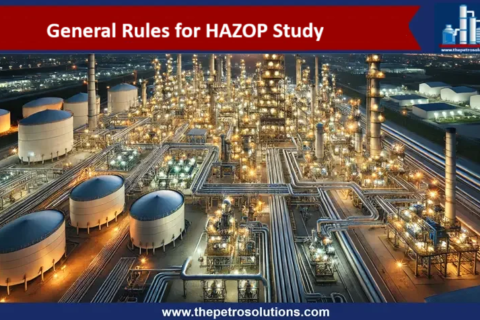The feedstock of the Hydrotreating unit contains metal contaminants along with Sulfur and Nitrogen. These metallic compounds are a challenge for the catalyst performance and can damage the catalyst activity permanently. They can foul the catalyst by increasing the differential pressure of the reactor thus shortening the cycle length of the catalyst. These metals are permanent poison for the catalyst and have irreversible effects.
The de-activation of hydrotreating catalysts can be because of coke deposits and metal contaminants present in the feed. Catalyst with coke deposition can be regenerated while catalyst poisoned by metals is difficult to regenerate. Further, coke and metals deposition are poisons for hydrotreating catalysts and increase the deactivation rate.
The effect of deactivation is nominal in the case of middle distillate or naphtha units. However, the refinery faces severe deactivation rates while processing heavier feed-stocks like vacuum gas oil (VGO), heavy coker gas oil (HCGO), deasphalted oil (DAO), or even heavier cuts. The coking reactions here are very significant because the feedstock contains lots of coke precursors in the high boiling fraction. Also, heavy feedstocks contain a significant amount of heavy metals. In particular, this includes nickel, vanadium, iron, silicon, arsenic, phosphorus, calcium, and sodium
Most of the metallic impurities are present in the distillates as organo-metallic compounds and occur at ppm or ppb levels but the effect is significant. Most metals are arsenic, mercury, nickel, vanadium, silicon, Iron, Ca, Mg, Na, Pb, Phosphorous, etc. Na, Ca and Mg are present in the form of inorganic compounds.
Effects of Feed Metals on Hydrotreating Catalyst
- The most obvious effect of metal contaminants in the hydrotreating reactor is differential pressure rise. They deposit on the pores of the catalyst and block them from a reaction. If it is added with coke formation due to carbon lay down, then the situation becomes worse, and maximum allowable different pressure can come in a short time.
- Metals can contribute to catalyst deactivation once deposited on the catalyst pores and cannot be removed by regeneration and serve as permanent poison.
- Metals accelerate the rate of deactivation of the catalyst. As the metal deposits on the catalyst, its activity decreases. To compensate for this, the temperature of the reactor has to be increased to achieve the desired product quality. The high temperature of the catalyst increases the coking rate hence reducing the catalyst life.
- Once the catalyst metals’ holding capacity is over, the metals will pass through the catalyst hence affecting the product quality due to metals in the product.
- Metals deposition on the catalyst can also result in channeling or maldistribution of the process fluid.
- In the end, the final effect is the financial cost that the refiner has to bear in the form of downtime, cost of catalyst, and its replacement which can be a million dollars.
Controlling of Feed Metals in the Hydrotreating unit:
In oil refining, different techniques are being used to remove the metal precursors from the feed of the hydroprocessing unit. For heavy feeds like gas oil, all the methods can be applied.
- Feed filters can be used to remove the particles in the size of 20~25 microns size.
- A catalyst guard bed/grading bed system can be used to capture the particles before going on the active catalyst.
- Mechanical traps or scale catchers can be installed at the top of the reactor.
- An additional reactor with a guard bed or mechanical trap can be installed upstream of the active catalyst reactor. This reactor can be cleaned or the guard bed can be replaced online without shutdown the unit.
Hydroprocessing Unit Feed Metals and their Resources:
| Na, Ca, Mg | These are present in crude oil as inorganic salts. These might pass to the hydrotreating units due to the malfunctioning of the de-salter. |
| As (Arsenic) | It is present in crude oil. It deposits on the catalyst metal sulfide sites and in particular the active nickel on the catalyst forming nickel arsenide. |
| Fe | It is in crude oil in the form of an organometallic compound. In addition, it enters the feed as rust and scale from corrosion of upstream equipment and piping as well as from unfiltered particulates present in the feed. |
| Si (Silicon) | Anti-foam agent based on polydimethylsiloxane in the upstream unit. |
| Ni (Nickel) | Crude oil in the form of organometallic compounds, heavy feed. |
| P (Phosphorous) | The common source is crude oil and refinery additives as well. |
| V (Vanadium) | Crude oil in the form of organometallic compounds, heavy feed. |
| Pb (Lead) | Crude oil |
For further discussion and details please contact, admin@
Certified Functional Safety Professional (FSP, TÜV SÜD), Certified HAZOP & PHA Leader, LOPA Practitioner, and Specialist in SIL Verification & Functional Safety Lifecycle, with 18 years of professional experience in Plant Operations and Process Safety across Petroleum Refining and Fertilizer Complexes.
- Nasir Hussainhttps://thepetrosolutions.com/author/admin/
- Nasir Hussainhttps://thepetrosolutions.com/author/admin/
- Nasir Hussainhttps://thepetrosolutions.com/author/admin/
- Nasir Hussainhttps://thepetrosolutions.com/author/admin/






